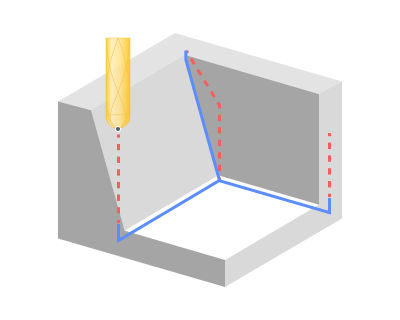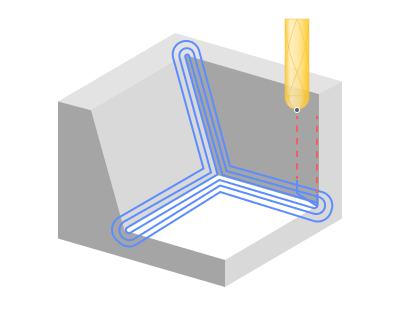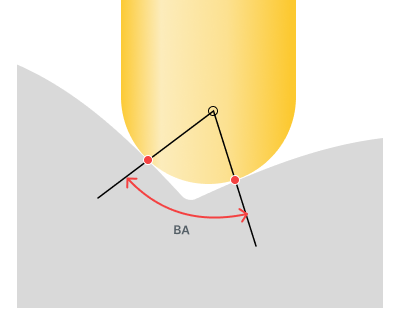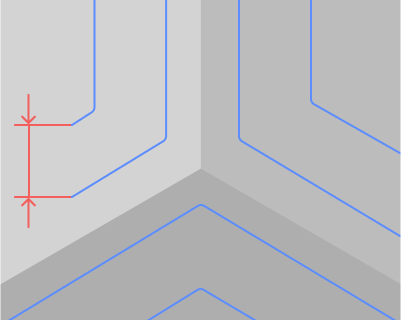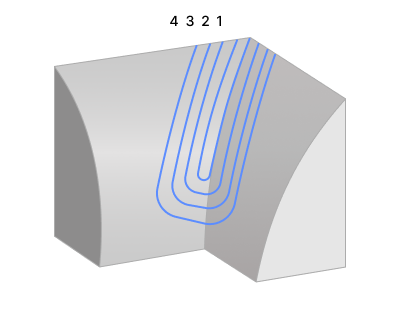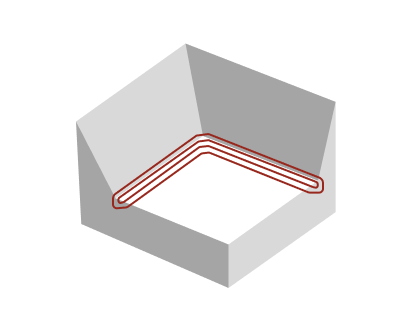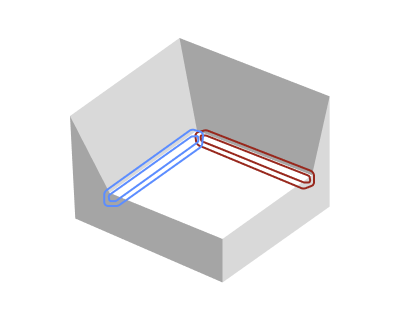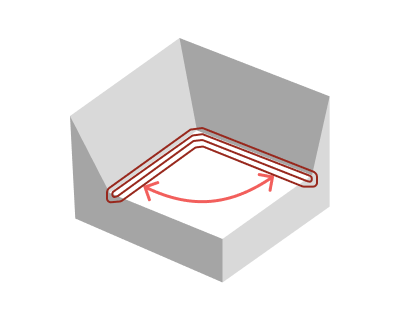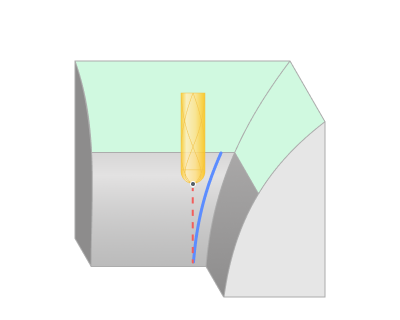Pencil operation
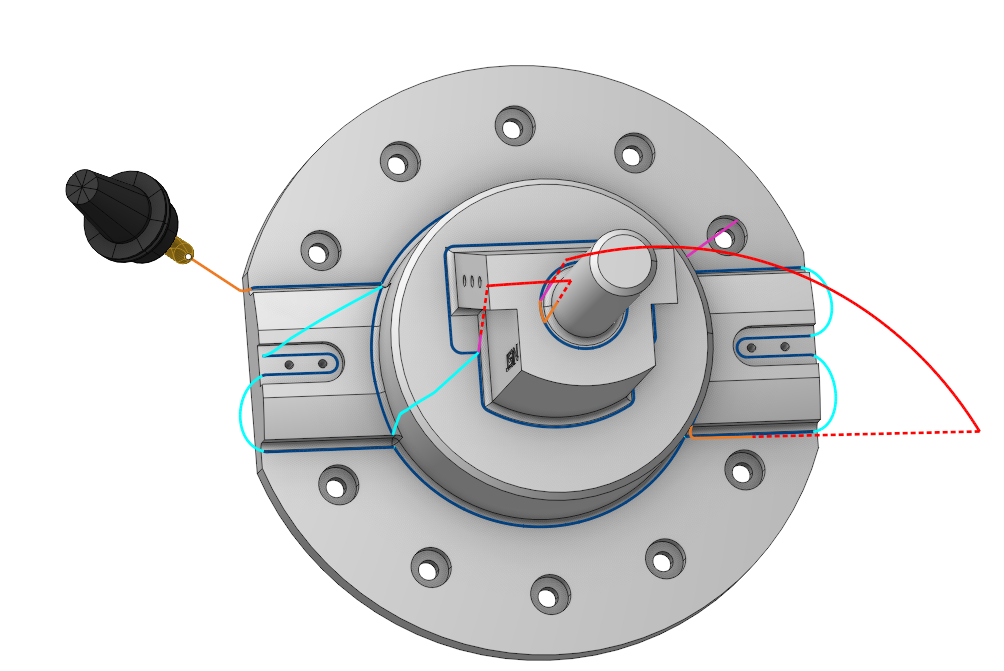
Application Area:
The rest machining operation generates passes along inner corners of the part.
Job Assignment:
Machining Surfaces. The passes are generated only on places where the tool contacts the machining surfaces. If the machining surfaces are missing, the toolpath is generated within the whole part.
Job Zone. Job zones are used to define the part areas that have to be machined by roughing and finishing milling operations. See more
Restrict Zone. In addition to Job Zones in system you can use Restrict Zones to specify the workpiece areas that have not to be machined in the current operation. See more.
Tilt Curve.
This is t
he curve that the tool axis vector aims at when setting
5 Axis Conversion
specification
Through Curve.
Properties. Displays the properties of an element. It is possible to add the stock. You can also call this menu by double clicking on an item in the list.
Delete. Removes an item from the list.
Restrictions. It allows you to restrict areas that should not be machined. See more
Strategy:
Strategy:
This group of parameters allows the user to achieve a required toolpath:
Milling type:
Сan be assigned in almost all operations, except for the curve machining operations. This allows the user to control the required milling type (climb or conventional) during the toolpath calculation process . This parameter group works similarly to the Waterline roughing operation. See more
Sorting:
Controls the sequence of toolpath passes during the surface machining .
Machining Slopes:
Determines areas for machining based on the gradient of the corners generatrix lines.
Machining Levels:
It defines the range along tool axis for the machining. See more. Specify the Bottom Level as in the Waterline Roughing operation. See more
5 axis conversion:
Controls tool axis orientation. See more. The principal parameters of this function are the same as in the 5D Surfacing operation. See more
Trimming:
Allows for the skipping of surfaces not intended for machining and allows for the extension of the toolpath. The parameters of Trimming are the same as in the Waterline Roughing operation. See more
Links/Leads:
In the Links/Leads tab, you define the parameters for rapid movements. These movements include tool approach from the tool change position, engage to the start of the working stroke, retraction after the final cutting motion, transitions between working passes, and return to the tool change point. You can configure the sequence of movements along the coordinates, the trajectory of these motions, and the magnitude of displacements.
Feeds/Speeds:
Using this dialogue the user can define the spindle rotation speed; the rapid feed value and the feed values for different areas of the toolpath. Spindle rotation speed can be defined as either the rotations per minute or the cutting speed. The defining value will be underlined. The second value will be recalculated relative to the defining value, with regard to the tool diameter. See more
Transformations:
Parameter's kit of operation, which allow to execute converting of coordinates for calculated within operation the trajectory of the tool. See more.
Part:
A Part is a group of geometrical elements that defines the space to check for gouges. See more
Workpiece:
A workpiece model of an operation defines the material to be machined. See more
Fixtures:
As the Fixtures the fixing aids such as chucks, grips, clamps, etc., and the restriction areas of any other nature are usually specified. See more
